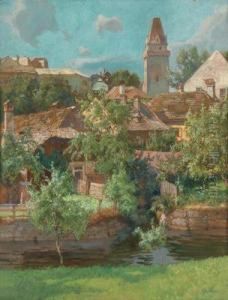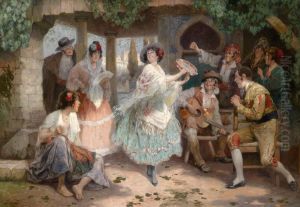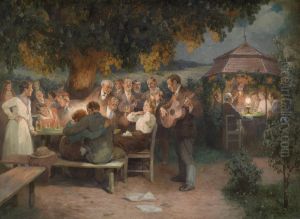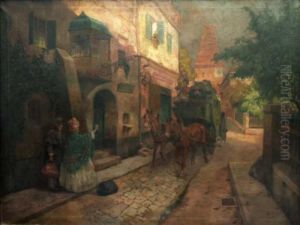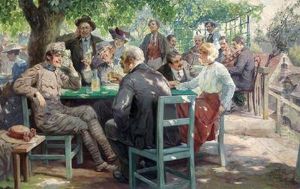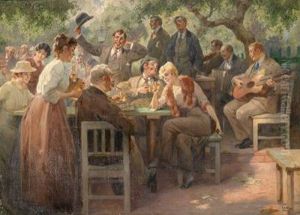Rudolf Alfred Hoger Paintings
Rudolf Alfred Höger was an Austrian architect, born on August 25, 1877, in Vienna, Austria-Hungary. He is best known for being one of the prominent figures in the Brick Expressionism movement, which flourished in the 1920s and early 1930s, primarily in Germany and the Netherlands. Höger's designs were characterized by the use of brick as the main material, and he was celebrated for his ability to manipulate the texture, form, and color of bricks to create expressive and dramatic architectural compositions.
Höger received his architectural education at the Staatsgewerbeschule (State Trade School) in Vienna, where he trained under the architect Carl König. After completing his studies, he worked in various architectural offices in Vienna before relocating to Hamburg, Germany, where he would make his most significant professional contributions.
One of Höger's most iconic buildings is the Chilehaus in Hamburg, completed in 1924. This office building is famous for its top, which is shaped like a ship's prow, and the facade that is reminiscent of ocean waves – both elements highlighting the city's maritime heritage. The Chilehaus is considered one of the masterpieces of Brick Expressionism and has been listed as a UNESCO World Heritage Site since 2015.
Despite being primarily associated with Brick Expressionism, Höger's work was also influenced by other contemporary styles, including Art Deco and the more traditionalist Heimatschutzstil (regional protection style). His ability to blend these diverse influences into a cohesive and unique architectural language is part of what has cemented his legacy in the world of architecture.
Unfortunately, Höger's career was cut short by the rise of the Nazi regime in Germany, which did not approve of his expressionist style. His later works, such as the St. Ansgar's Church in Hamburg, completed posthumously in 1952, were less experimental in nature due to the political climate of the time.
Höger died on November 5, 1930, in Hamburg, leaving behind a legacy of innovative and expressive architecture that continues to be studied and admired by architects and historians alike.


